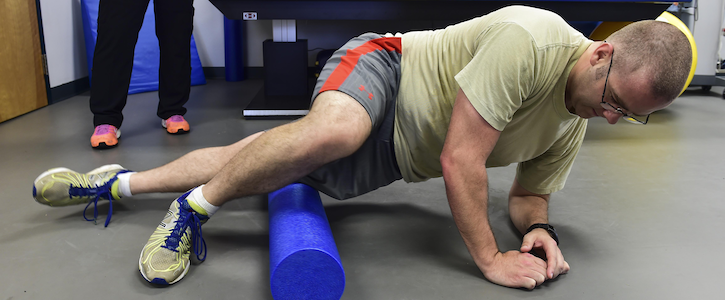- Politics
- Diversity, equity and inclusion
- Financial Decision Making
- Telehealth
- Patient Experience
- Leadership
- Point of Care Tools
- Product Solutions
- Management
- Technology
- Healthcare Transformation
- Data + Technology
- Safer Hospitals
- Business
- Providers in Practice
- Mergers and Acquisitions
- AI & Data Analytics
- Cybersecurity
- Interoperability & EHRs
- Medical Devices
- Pop Health Tech
- Precision Medicine
- Virtual Care
- Health equity
Patients Are Satisfied with Tele-Rehab After Surgery
Tele-rehabilitation could be a viable option for patients who have total hip or knee replacement surgery.

Images have been resized. U.S. Air Force photo via Senior Airman Jeff Parkinson.
Tele-rehabilitation after total hip and knee replacement was found to lower costs, increase patient treatment compliance and led to high patient satisfaction, according to a study conducted by a research team at Yale University.
The study measured acute care outcomes, readmissions and emergency department visits for 40 patients enrolled in a tele-rehabilitation program following total hip and total knee replacement surgery, compared to 614 patients who completed traditional rehabilitation following the surgery.
Among the key takeaways was that only one patient (2.5 percent) enrolled in the program was readmitted after 90 days, while 35 (5.7 percent) patients who completed traditional physical therapy were readmitted.
Patient satisfaction was also favorable, with 90.3 percent saying they would willingly recommend the tele-rehabilitation program. Participants gave the program an approval score of 91.2 percent.
In the study, 40 patients who had total hip and total knee replacement were enrolled in a tele-rehabilitation program following surgery. Patients could do daily exercises at home with an animated avatar and had four to six face-to-face physical therapy sessions.
The system, called Reflexion, was remotely managed and provided patients with at-home physical rehabilitation therapy through virtualized sessions. Patients enrolled in the program would interact with Vera, an avatar virtual therapist, via at-home “kits.”
During the physical therapy sessions, patients followed Vera as the avatar guided them through exercise sessions. The technology allowed for live feedback on the quality of some exercises the patient performs and allowed for live virtual sessions with physical therapists interacting with the patient in their home.
The Reflexion system recorded compliance, accuracy, functional outcomes and satisfaction surveys.
Patients using the technology performed exercises with 92 percent accuracy and participating total knee patients showed an average range of motion of 3-115 degrees at completion of the program.
While many of the results of the tele-rehabilitation program and traditional physical therapy were not significantly different, a cost analysis also showed a minimum cost savings of $1,000 when tele-rehabilitation was used.
“When the patient can do routine exercises on their own with guidance and support through tele-rehabilitation, you are going to lower your cost,” said Mary I. O’Connor, M.D., professor of orthopaedics and rehabilitation at Yale School of Medicine.
O’Connor said that because physical therapy is a resource-heavy model, involving a skilled professional will increase costs.
With similar results to traditional physical therapy, this study shows that tele-rehabilitation programs can have the same effect as standard rehabilitation, while reducing costs and potentially decreasing burden for patients after surgery.
Get the best insights in healthcare analytics directly to your inbox.
Related
Karantis360 Uses IBM Cloud for Assisted Living Solution
Setting the Stage for Next-Generation mHealth
Telehealth Can Provide a Solution for Millennials with Depression
Podcast: Adoption of Healthcare Tech in the Age of COVID-19 with Dr Kaveh Safavi
June 22nd 2021Kaveh Safavi, MD, JD, global health lead of Accenture Health, discusses how the pandemic influenced the speed at which healthcare organizations adopted new technologies and how this adoption is impacting patient care.
